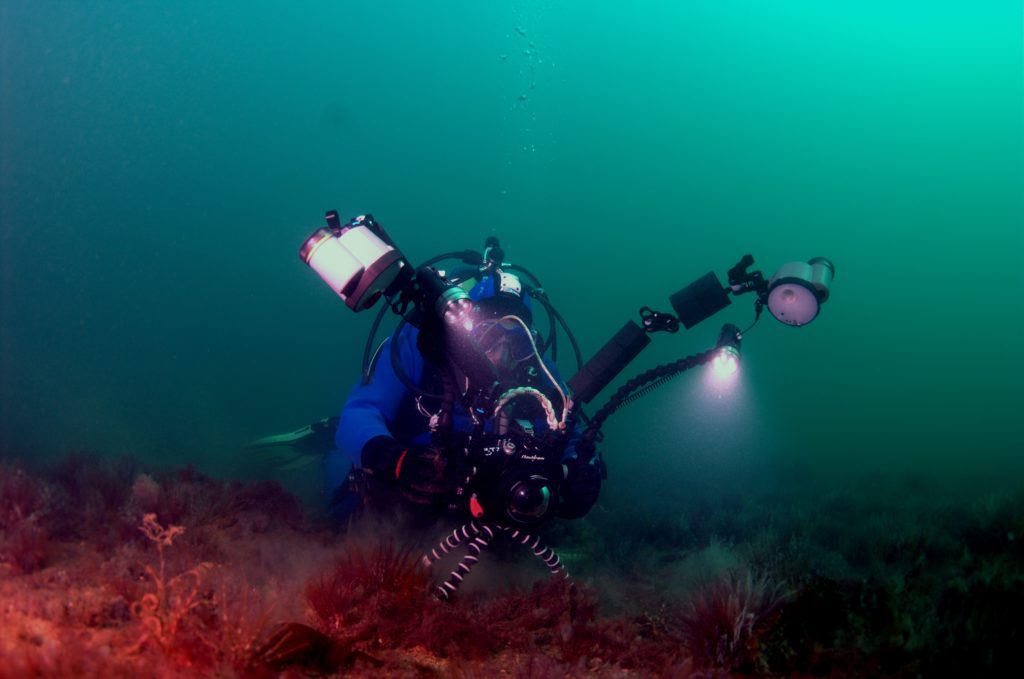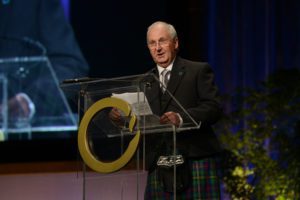Establishing a Marine Protected Area in 3 steps
Ballan Wrasse, Arran Coast - photo by Howard Wood
Marine ecosystems are seriously threatened and the European Commission is calling Member States to better protect their seas. Establishing Marine Protected Areas (MPAs) is a key conservation measure, to safeguard marine ecosystems and species. Who should be involved in the protection of our Seas? Local communities have a role to play? In this article issued by Howard Wood, we bring you an interesting story from Scotland: the creation of the first Scottish community-led Marine Reserve.
A small Scottish island community leads the way to protect and recover our seas
article issued by Howard Wood
Diving for 10 years with my friend Don around the Isle of Arran in the Firth of Clyde (3700 sq. km of sea) we saw with our own eyes a very rapid decline is marine life. For decades overfishing and poor fisheries management have been the norm. Even the 3m/5k offshore protection from bottom towed trawls was removed in 1984, due to industry pressure.
Rays, assorted flat fish, anglerfish, cod and pollack decreased and then disappeared. In 20 years, the commercial fishing industry lost 70% of its jobs in the Clyde area. With so few fish to catch, recreational sea anglers (RSA) gave up. The commercial fishers, encouraged by Government, turned to scraping prawns out of the mud and dredging up scallops from sand and gravel seabeds.
Reports were written and pressure was put on Government by RSA, marine tourism and environmentalists, but all were ignored by Government who viewed the seas as a resource just for the benefit of commercial fishermen. There was no recognised official route to implement a marine reserve but it was clear to us that was what needed to happen if there was to be any recovery. So what were the 3 major steps we took?
Establishing a Marine Protected Area in 3 steps:
1st Step – Engage your community
With my dive buddy Don MacNeish, we researched and understand the heart of the problem was regulatory capture of Government by just one section of the fishing industry (the ones using the most destructive fishing gear).
To save our seas, we needed to “dive” into politics, to meet fishermen leaders and encourage a longer term vision.
It was obvious that no one was going to take much notice of us unless we had the widespread support of our island community. So we founded COAST, The Community of Arran Seabed Trust.

We held public meetings, gave presentations to dozens of local organisations and collected photos of fishermen with huge fish -from just a decade before. We needed to show what was missing. With growing public support, politicians slowly started to help COAST and write letters on our behalf, but still Government officials continued as if our seas were solely for the benefit of the remaining commercial fishermen.
2nd step – Challenge the status quo and find joint solutions
After 3 years, numerous meetings, enquiries by cross party parliamentary committees, government officials, fishing industry leaders and COAST were given 6 months to find an agreed solution. Progress was slow, 6 months became 2 years and even then, fisheries leaders threatened to walk away at the last minute unless the agreed small 2.67 sq. km NoTakeZone was halved in size. We held our ground and on the 20th September 2008, the first UK community led Marine Reserve was designated by the Scottish Parliament.
However, the overriding issue was still unresolved – on whose behalf should our government be managing the sea?
For a small island community organisation, we were fortunate to be meeting senior Government officials and regularly challenged them on just who “owns” Scotland’s seas. After months of officials saying “It’s solely a matter between ourselves and commercial fishermen”
finally the Scottish government accepted that Scotland’s seas were a public asset and a common resource.
Two years later the Scottish parliament passed the Marine Act, which included the set up of a network of Marine Protected Areas. For its first 20 years COAST was run by volunteers, often with no funding. In, 2011, COAST gained funding for its first paid member of staff. Three years later South Arran Marine Protected Area was 100 times larger than the original NoTakeZone and covering 280 sq.km.
3rd Step Monitor and analyse effects
The Scottish government did the initial baseline surveys of the NoTakeZone but since 2010 COAST has raised funds to monitor, working mainly with University of York PhD & MSc researchers. Nearly 30 research papers have been produced. For such a small area the original NoTakeZone, has, over 9 years, rejuvenated scallop and lobster stocks and doubled the biodiversity of the seabed providing nursery areas for fish.

The people of Arran are extremely proud of their Community Marine Reserve and while Marine Scotland have the legal duty to protect the area, they are supported by dozens of local people.
The next step. Share the success
While COAST have been at the forefront over the past 25 years they have now been joined by 9 other marine communities all campaigning and wanting to be involved in the management of THEIR seas. https://www.communitiesforseas.scot/

Howard Wood at the Goldman Award Ceremony
Howard Wood is co-founder and chair of COAST (Community of Arran Seabed Trust) and also founder and director of SIFT. His passion for diving around the Isle of Arran in Scotland since 1974 led him to become a marine environmental campaigner. In 2015 he was awarded the Goldman Environmental Prize for Europe and for his services to the marine environment an OBE by Queen Elizabeth II.